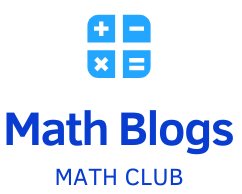Since the introduction of technology into schools, many traditional ways of teaching and learning have changed. Thanks to these advancements, math software has become a groundbreaking tool that has revolutionized the way students learn math and the way teachers teach math. The transition from rigid text to a dynamic, interactive platform adds a new dimension to math education, making it more accessible, fun, and educational for students at all levels.
Consider Different Learning Styles
The beauty of math software is that it can be used by people with different learning styles. The standard teaching methods used in traditional classrooms can make it difficult for some students to understand vague ideas. Math software fills this gap by presenting math problems in an interactive and visual way. Students can see numbers come to life through images, animations, and models, making abstract concepts more realistic and easier to understand. For example, dynamic geometry tools allow students to change shapes and see how those changes affect angles and dimensions. This helps them understand how things fit together in space.
Adaptive learning
Math software also offers an adaptive learning experience, meaning that lessons can be tailored to the needs of each student. Platforms with artificial intelligence can track student success and adjust the difficulty or focus of assignments based on that information. This personalized approach ensures that students don’t get too stressed out by difficult tasks or bored by tasks that are too easy. Students who are struggling with a particular subject get extra help and practice, while students who are already good at something are given more difficult topics. This opportunity for change not only makes you feel better about your skills, but it also helps you learn math faster.
Empowering people to learn for themselves
Another way that math tools can make a difference is by helping students learn on their own. While traditional methods put teachers in charge of the lesson, math software gives students the freedom to take control of their own learning. Students can work through topics at their own pace on an interactive platform, return to difficult sections, and get instant feedback on their understanding. Students gain immediate insight into their skills and weaknesses, which helps them develop a growth mindset and continue to try to solve problems.
A teacher’s best friend
Math software is a great tool for teachers in the classroom. These tools make it easy for teachers to create positive lesson plans, deliver engaging presentations, and track student progress. Many software come with modules and tasks already set up and aligned to educational standards, which saves a lot of time when planning lessons. Teachers can also use data analytics to focus on student performance, both individually and collectively, identifying patterns and problem areas that may require additional help. This data-driven approach helps teachers make informed choices and provide specific support, which improves overall learning outcomes.
Let people learn together
Math software also makes it easier for people to learn together, an essential part of modern education. Online sites often offer group assignments, so students can work together on math problems or projects, even if they are in different locations. Collaboration not only improves your problem-solving skills, it also improves your communication and collaboration skills, both of which are essential for success in the 21st century. Mathematica creates a sense of community by engaging students from all over the world and exposing them to different perspectives and ways of working.
Preparing Students for a Technology-Based Future
Mathematics software helps prepare children for a future of technology. And it can be used outside the classroom, too. In a world where science, technology, engineering and math (STEM) jobs are on the rise, being good at math and technology is becoming increasingly important. When students use math software, they learn important numerical skills and are more likely to use technology to come up with new ideas. This foundation not only helps students perform better in school, it also prepares them for future challenges in their personal
Editing software
However, there are also some challenges to the widespread use of math tools. Teachers and students may have to go through a difficult learning curve when switching to a new platform. People who are used to the old ways may also be resistant to change. Furthermore, in some places, it is still difficult to access technology, either because of insufficient facilities or because they cannot afford to use digital tools. To ensure that everyone can benefit from math software, legislators, teachers and software developers must all work together to address these issues.
How will math be taught in the future?
Despite these challenges, it is undeniable that math software has changed the way people learn. This new technology is changing the way math is taught and learned. It makes it more personal, dynamic and fun. As technology continues to develop, there are more and more ways in which math tools can transform education and create new ways to innovate and improve.
In short, math software will do more than just supplement standard teaching methods; it will revolutionize the way we learn. These tools will transform the way we teach math by closing gaps, encouraging independent learning, and teaching students important skills. As we embrace the digital revolution, the future of math education will be even brighter. It will be more accessible to everyone and better able to meet the needs of a rapidly changing world.




